Weather was much more cooperative during our sixth week at the Straits. We only had to close our nets early or open them later twice this week. However, our number of owls caught for the week continued to decline with 51 birds, suggesting that we are now past peak migration. It was enough to get us past the 300 mark for the season with a total of 326 owls! Our number of northern saw-whet owls (NSWOs) is at 318 birds, comprising of 55 males, 209 females, and 54 unknowns. Our sex ratio of males to females can be simplified to 5:19.
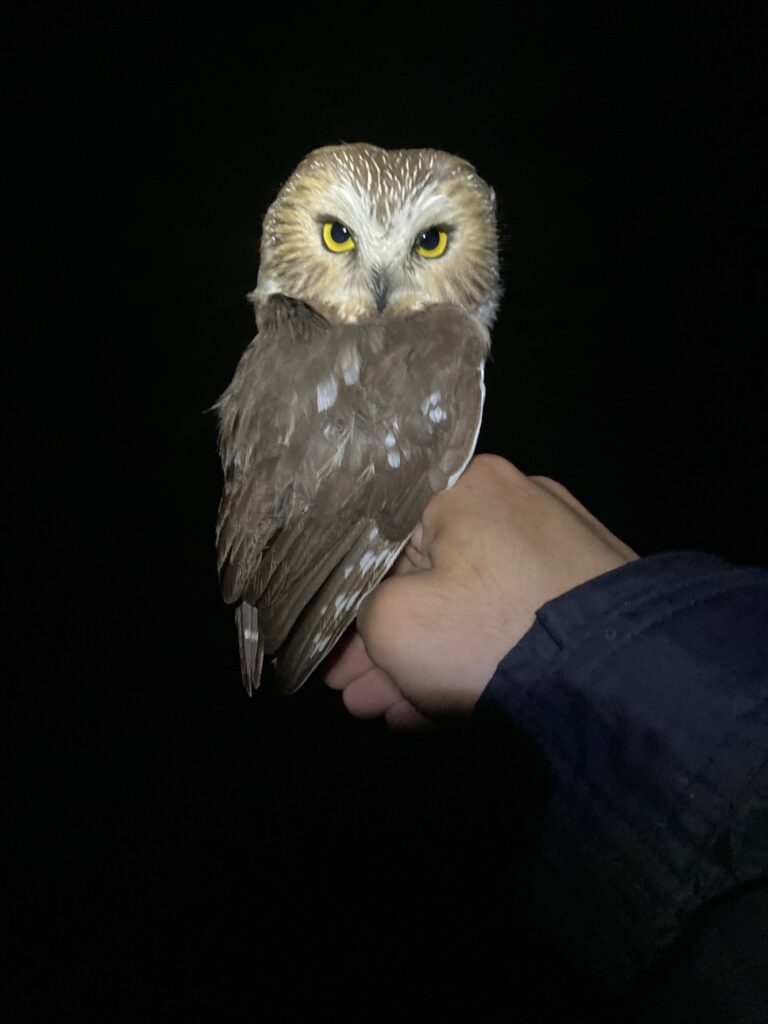
An unexpected surprise this week was the appearance of not just 1, but 2 barred owls (BDOWs) together at one of our net sites in the early morning on October 25th! We successfully captured one but the other unfortunately escaped. Another individual was captured earlier on the 22nd. We also captured another female long-eared owl (LEOW) during dawn on the 22nd at our last net check. Banding her under more light allowed for a much appreciated look at the details of her plumage.
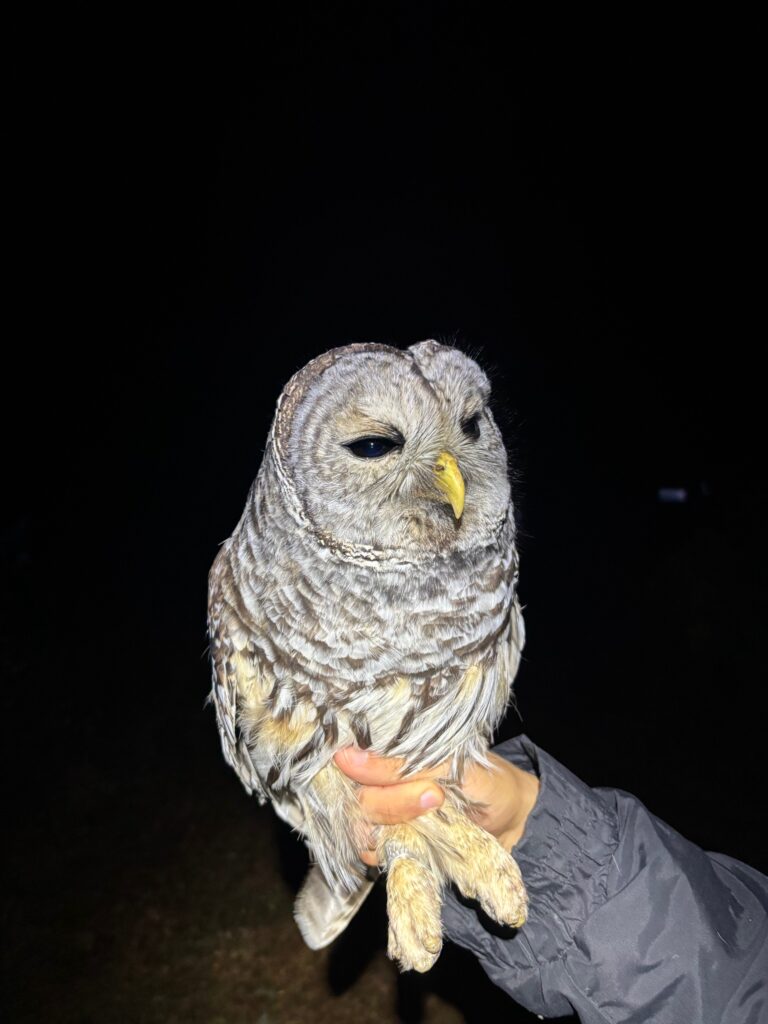
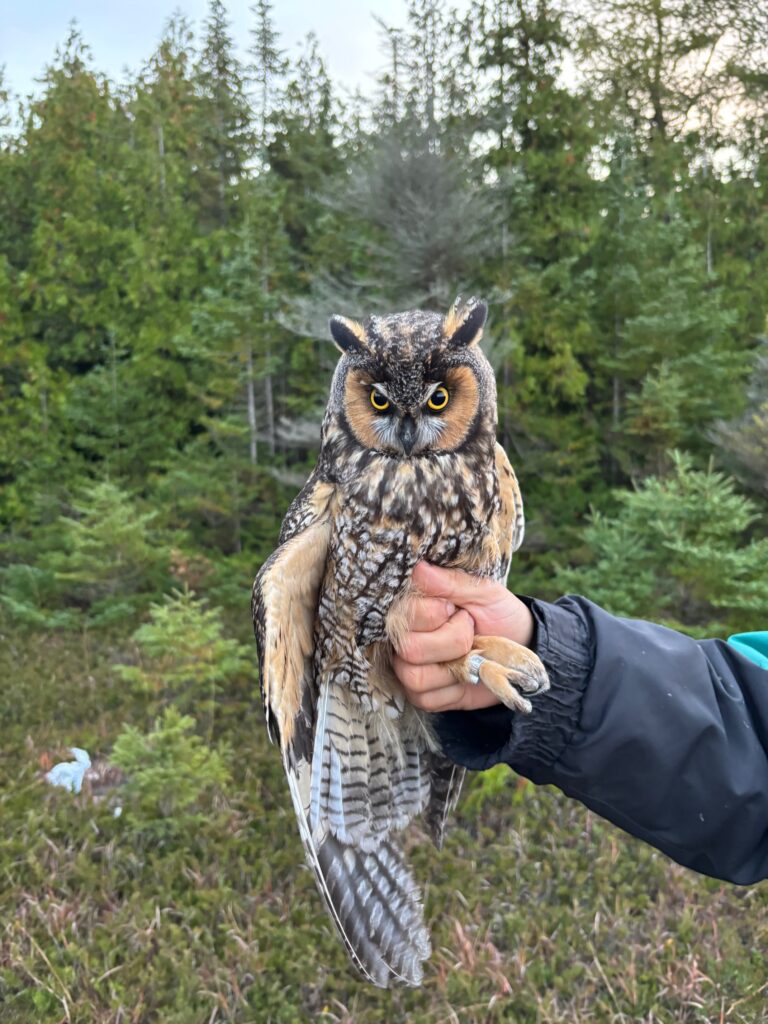
A common point of discussion with the many visiting groups to our banding station the past couple weeks has been the adaptations that make owls such successful nocturnal predators. There are several that we would like to summarize here. The rounded, disc-shaped face of owls that gives them their iconic look has a purpose. Known as a facial disc, this feature allows owls to funnel sound and works in tandem with their asymmetrical ears. One ear is higher than the other, unlike the symmetry exhibited in humans and most other animals. In addition to great hearing, owls also have excellent vision by using their large, forward-facing eyes that are adapted to low-light conditions. However, their eyes are fixed in place and thus to compensate for this, owls have greater flexibility in their neck which is accomplished by having additional cervical or neck vertebrae.
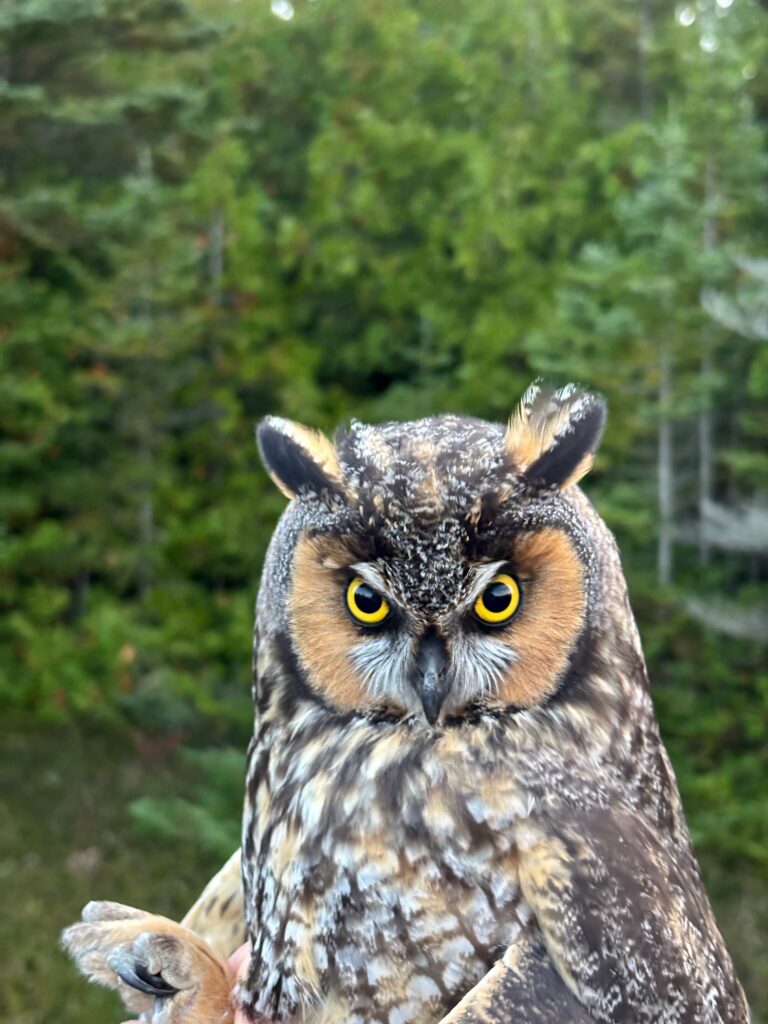
While their hearing and vision adaptations all help owls locate prey in the dark, they still need to catch it successfully. Depending on the species of owl, prey can include large insects, small mammals, reptiles, amphibians, birds (including other owls), and even fish. The color patterns of the plumage and ear tufts for some species (like the LEOW) provide excellent camouflage, while the comb-like fringes along their flight feathers help break up air passing over the wings to provide silent flight. These characteristics provide owls the ability of stealth, allowing them to ambush and catch prey with their sharp, hooked beaks and talons. Owls are zygodactyl, meaning they have two toes pointing forward and two backward, but are capable of pivoting one of their back toes forward. This provides them with a strong and versatile grip when perching or handling prey.
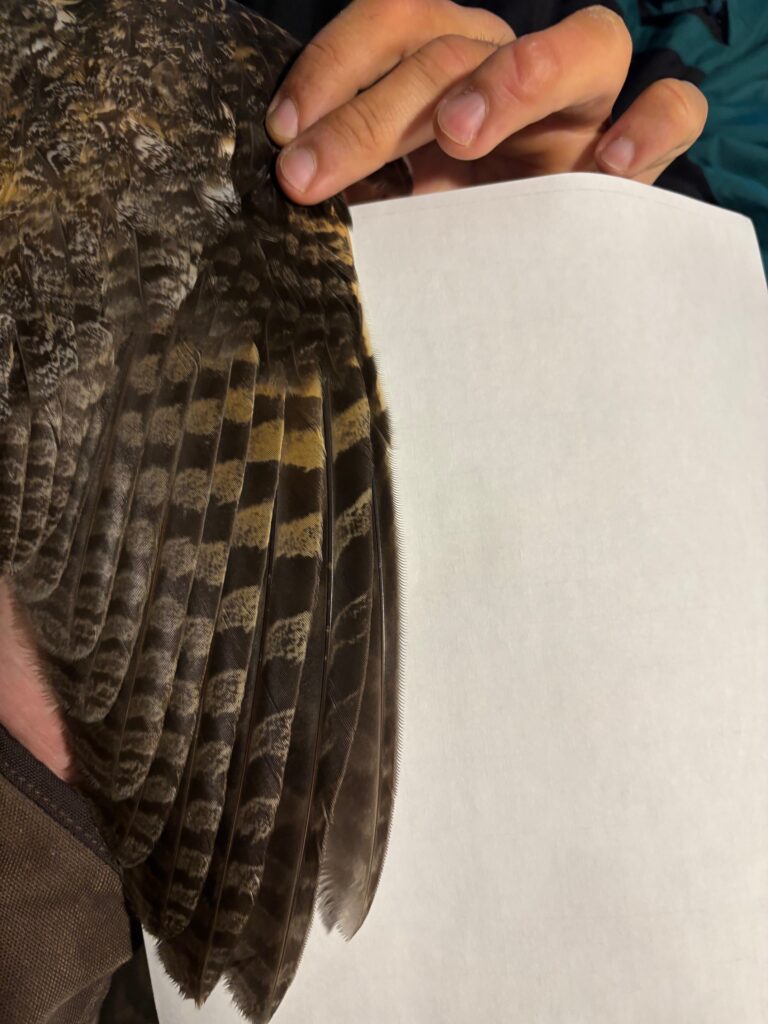
Season Numbers:
Total: 326, NSWO: 318, BDOW: 6, LEOW: 2
Jake and Josiah
